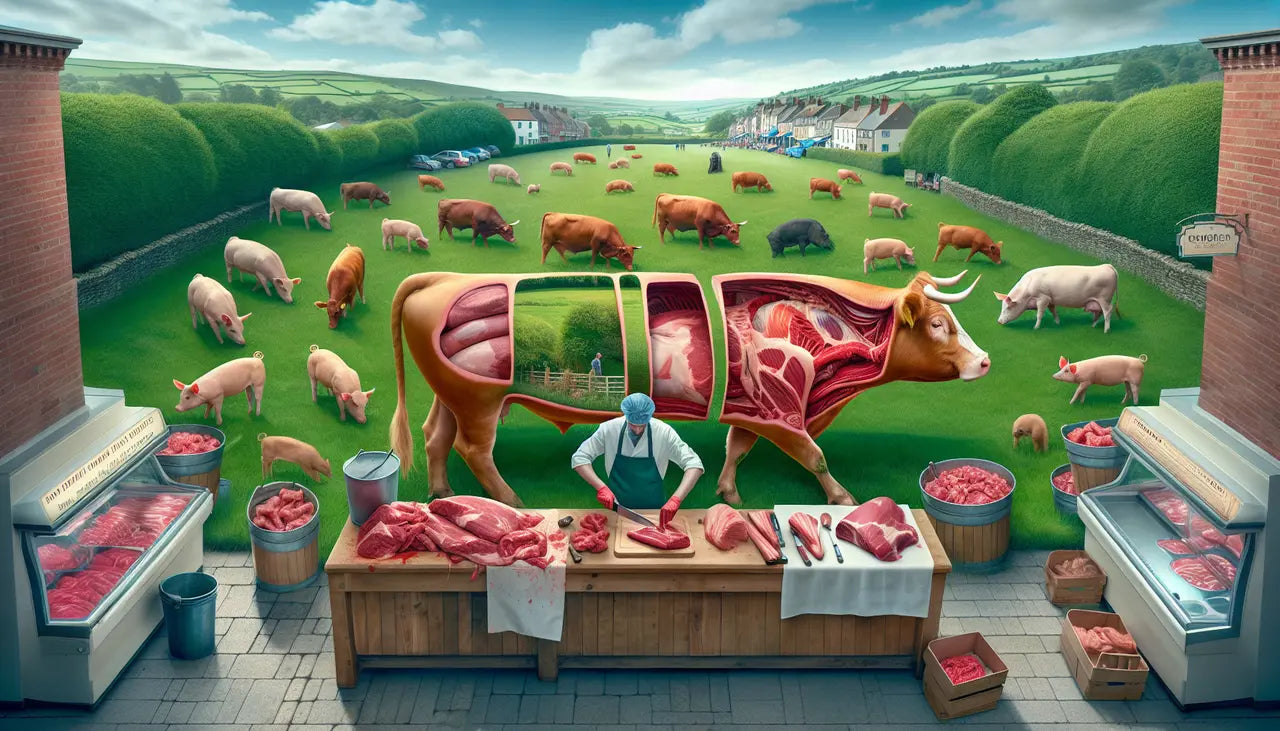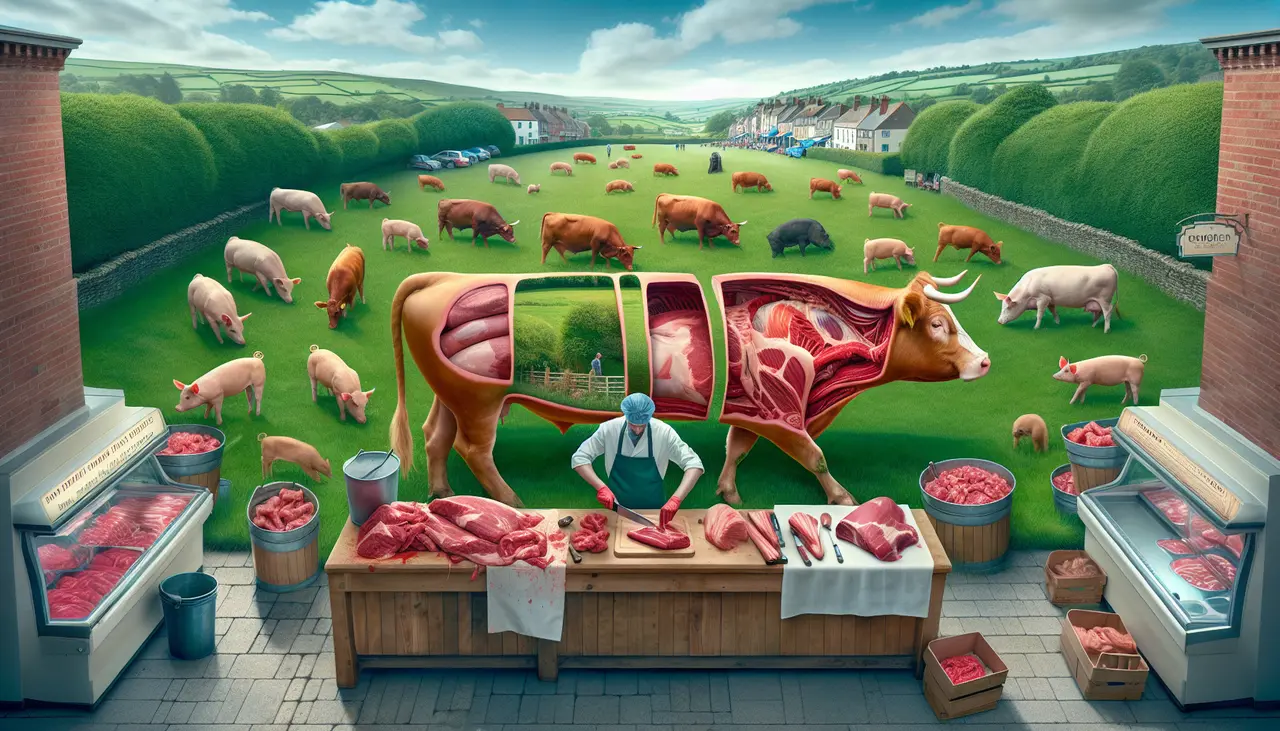
Introduction to Whole Animal Butchery
Whole Animal Butchery isn’t just about cutting meat. It’s a step towards sustainable eating. By using the entire animal, butchers make sure nothing goes to waste. It’s old-school but makes more sense now than ever. We’re talking beef, pork, chicken, you name it. The goal? To respect the animal by using every part - from nose to tail. This method isn’t new, but it’s gaining traction again, especially among those who care about where their food comes from. It’s also a nod to local economies. Source animals from nearby farms, it supports local farmers and reduces the carbon footprint linked to transporting meat over long distances - we are talking animals that are shipped from New Zealand, Australia and South America and imported into the US. Whole animal butchery is as much about ethical eating as it is about flavor. By using the entire animal, chefs and home cooks discover cuts and flavors they’ve never experienced before. So, let’s dive in and explore how this traditional approach is making a modern comeback.
Understanding the Concept of Whole Animal Butchery
Whole animal butchery is about using every part of an animal, leaving nothing to waste. It’s an old practice, getting new attention for being good for the planet and local economies. This method respects the animal and helps small farmers by buying the whole creature. Unlike big stores that only want popular parts like breasts or thighs, whole animal butchers use it all - from nose to tail. This means more variety for customers and less waste. Also, it supports smaller, often more sustainable farms rather than large-scale operations. Whole animal butchery isn’t just cutting meat; it’s a statement about food sustainability and community support.
The Local Impact of Whole Animal Butchery
Whole animal butchery is more than just a trend; it’s a pathway towards sustainability in our local food systems. By using the entire animal, from nose to tail, butchers make sure nothing goes to waste. This approach not only honors the animal but also supports local farmers who raise these animals, often with more ethical and sustainable practices than large-scale industrial farms. Think about it – when a butcher buys a whole animal from a nearby farm, that money stays within the community, strengthening the local economy. Moreover, whole animal butchery leads to a diverse range of meat products for consumers. Instead of the same cuts you find in big grocery stores, you might discover new and delicious parts of the animal you’ve never thought of trying. This diversity can also inspire chefs and home cooks alike, fostering a culture of creativity and appreciation for lesser-known cuts. And let’s talk about taste and quality – it’s generally agreed that locally sourced, sustainably raised animals provide meat that’s superior in flavor. So, the impact? Healthier, more delicious choices for you, a boost for the local economy, and a big win for the environment.
Benefits of Whole Animal Butchery for Sustainability
Whole animal butchery is not just a practice; it’s a stride toward sustainability. This method ensures every part of the animal is used, leaving little to waste. By buying whole animals, butchers can offer customers a variety of cuts that are often not available at regular meat shops. This encourages a broader appreciation and use of the animal, reducing the demand for mass-produced meat. You’re not only supporting local farmers, but you’re also embracing a more sustainable way of consuming meat. With whole animal butchery, small-scale operations get a boost. These are the guys focusing on quality and eco-friendly farming practices. It’s about knowing where your meat comes from and respecting the process. So, choosing whole animal butchery is choosing to impact less, respect more, and foster a community that values every part of the animal.
Challenges Facing Whole Animal Butchery
Whole animal butchery is picking up steam for its sustainable approach and focus on reducing waste. However, it’s not a smooth road; challenges are part and parcel of this industry. One major hurdle is the consumer market. People are used to buying popular cuts of meat, leaving less demand for other parts of the animal. This imbalance makes it tough for butchers to sell every piece, potentially leading to the very waste they aim to avoid.
Education, or the lack thereof, is another stumbling block. Many consumers simply don’t know how to cook with unconventional cuts of meat. Without this knowledge, folks are less likely to buy these parts, leading to a surplus that’s hard to move.
Costs can’t be ignored either. Whole animal butchery often means higher prices. This is due to the meticulous labor and skill required, not to mention the costs of raising animals in a rotational pasture system. For shoppers watching their wallets, these prices might push them towards more affordable, but less sustainable, options.
Despite these challenges, the passion for sustainable meat consumption fuels the whole animal butchery movement. Overcoming these hurdles isn’t easy, but it’s a fight many in the industry are willing to take on, aiming to make sustainable meat consumption not just a niche trend, but a widespread practice.
How Whole Animal Butchery Supports Local Farmers
Whole animal butchery plays a vital role in backing local farmers. Here’s how it works: Instead of picking and choosing specific parts, consumers (you) buy entire animal. This approach ensures that we as ranchers sell the entire animal and not just the steaks leaving only ground beef. It’s a win-win. Ranchers get a fair price, and consumers get top-notch meat. Plus, this practice strengthens community bonds. By sourcing animals locally, it helps keep money within the community, supporting the local economy. It’s a straightforward yet powerful way to back those who raise our food.
Reducing Waste Through Whole Animal Butchery
Whole animal butchery isn’t just about tradition; it’s a stride towards sustainability. This practice means using every bit of an animal, leaving nothing to waste. It contrasts sharply with modern methods that cherry-pick only the prime cuts, discarding a huge part of the animal. There is a reason we don’t source to restaurants who only want premium steaks but leave behind the high value ground beef which accounts for 50% of the beef yield. By embracing whole animal butchery, local consumers make a big dent in reducing waste. As ranchers we also work to turn ground beef into more highly sought after items: think bone broth (hint, hint, coming soon), hot dogs, snack sticks, and even artisanal charcuterie. This approach challenges the throwaway culture and underscores the respect for the animal’s life. Plus, it supports local farmers who raise animals sustainably, making the community circle tighter and greener. Whole animal butchery proves that with thoughtful methods, we can conserve resources and still enjoy our meals.
The Role of Consumers in Promoting Whole Animal Butchery
Your choice matters, big time. When you opt for meat from whole animal butchery, you’re casting a vote for sustainability. It’s more than just buying meat; it’s about supporting a system where every part of the animal is used, reducing waste massively. By choosing these butchers, you encourage local farmers who raise animals ethically, support smaller businesses that care about their community, and ensure that less meat ends up in the trash. Every time you pick a cut of meat, think about where it’s coming from. Are you supporting massive, waste-heavy operations, or are you helping to keep things local and considerate? Yes, it might mean a change in how you shop or even eat, but it’s a small shift with a big impact. You have the power to shape the market. It all starts with your choice. Choose wisely.
Conclusion: The Future of Whole Animal Butchery in Sustainable Practices
Whole animal butchery is more than a trend; it’s a sustainable practice that honors every part of the animal and reduces waste. As consumers become more environmentally conscious, the demand for sustainable meat consumption practices, like whole animal butchery, is bound to rise. This method supports local farmers, promotes animal welfare, and minimizes environmental impact by ensuring no part of the animal goes to waste. Looking forward, whole animal butchery could play a key role in sustainable food systems. It encourages a closer connection to our food, understanding where it comes from, and the process it goes through before reaching our plates. By supporting local farmers who practice this method, consumers can contribute to a more sustainable and ethical food system. The future of whole animal butchery in sustainable practices looks promising, offering a path toward more ethical and environmentally friendly meat consumption.





